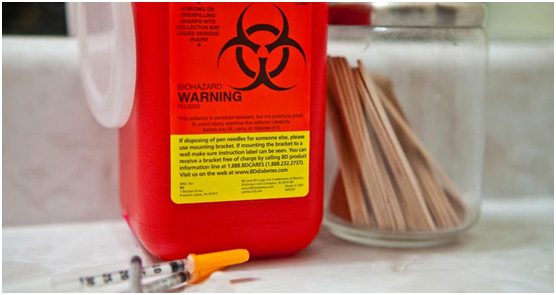
What is Biomedical Waste?
Every year American hospitals produce 5.9 million tons of medical waste with nearly 25% being regulated biomedical waste. So what deems something as a bio-hazardous medical waste? States classify waste into six broad categories:
- Tissue and body fluids
- Blood products
- Lab cultures and discarded material from live or attenuated studies
- Contaminated sharps
- Patient isolation paraphernalia
- Animal parts
What are the Six Main Categories of Biomedical Waste?
The disposal criteria differs from state to state but there are six pretty uniform ways of disposing of these types of waste.
The EPA, CDC and OSHA regulate biomedical waste on a federal level. In addition to these organizations, every state has its own regulations that must be followed strictly. As a result, it has become difficult to navigate these rules if you are not professionally trained per the regulations and proper disposal methods.
Transportation and Packaging of Biomedical Waste
In prior years biomedical waste was collected in plastic bags and boxes and then disposed of with the regular trash. After research concluded that this was not a safe method of disposal for the environment, refuse works, and the general population, regulations were put into place. The rules state that waste disposal companies who specialize in the management of biomedical waste must pick up the medical waste. The waste is then taken to a treatment facility where it is rendered safe and non-hazardous.
Biomedical waste is categorized by sharps or non-sharps and waste that is soft and cannot penetrate the shell of a red bio hazardous waste bag. Any other waste that can poke through bags, such as needles, go into a hard, red plastic box that cannot be pierced by sharp objects.
Finally, biomedical waste is treated in a couple of ways. One, it is made safe by sterilization, which is done through an autoclave process. This is when air is forced out of the unit and the waste is steamed at a high temperature and as a result bacteria cannot survive. After sterilization, the waste is sent to a landfill, some facilities will melt down and recycle plastic wastes. Another common form of treatment is incineration. Biomedical waste incinerators burn at a high temperature that destroys all materials so they are no longer hazardous or recognizable in the resulting ash.
What Facilities produce Biomedical Waste?
When people initially think of biomedical or bio-hazardous waste generators, their first thoughts are often hospitals or doctor’s offices. Although these are the most traditional generators, there are many other facilities that produce bio-hazardous waste, including:
- Jails and Prisons
- R&D Laboratories
- Gyms and Pools
- Animal Hospitals and Shelters
- Veterinarian Offices
- Crime Labs
Biomedical waste comes in all shapes and sizes with every category requiring a different form of management. This can be intimidating, but customers can find a much easier solution with the right disposal company.
